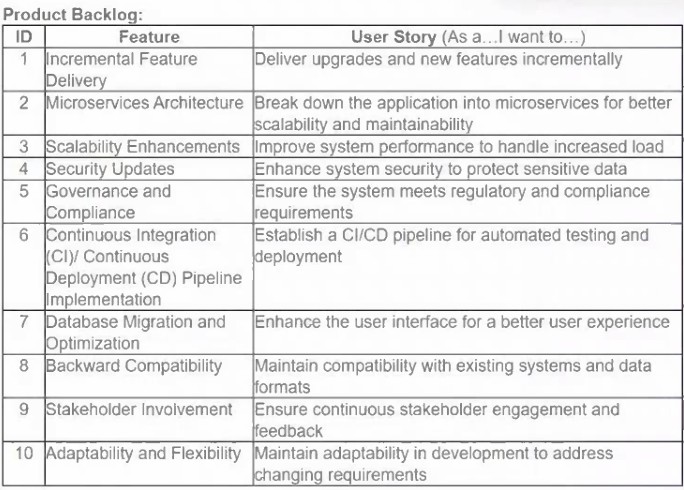PMI PMI-ACP - PMI Agile Certified Practitioner (PMI-ACP)
A project team is working with an enterprise agile center of excellence (CoE) to transition to a Scaled Agile Framework (SAFe). Many of the team members are not familiar with the new methodology and are worried that it will lead to more work and scrutiny.
What should the agile team lead do to help ensure a smooth transition?
A client is pressed for time and wants to launch a product with three components as soon as possible to gain market share. An agile lead proposes the following agile strategy to gain time: Three teams will work on the design and development of each component. Once all three components are finished, they will be tested and integrated.
Is this agile strategy appropriate?
How should the agile team lead respond?
How can a project team effectively work toward a common goal and communicate as they scale and expand to build a new business-critical platform, given that they have been responsible for a small customer-facing product with little complexity over the past 2 years?
A company president is concerned about the impact of a natural disaster on the company. How should management identify areas to apply its resources and mitigate potential impacts?
More details for a story are required before the upcoming sprint planning meeting.
What should the Scrum Master do?
During a recent sprint review meeting with stakeholders, the product owner received detailed feedback indicating the critical changes needed for upgrading the legacy system to better align with the latest technologies and user needs. How should the product owner help ensure the product backlog is effectively managed, while helping the team remain focused? (Refer to the Product Backlog Exhibit)

An agile project was underway for two months and delivered the expected value to the stakeholders. However, during a sprint review, a team member complained that the product owner constantly changes requirements and the member feels that this is blocking the team’s performance.
How can the scrum master handle this situation?
Some members of an agile project team work remotely, so it is difficult to have regular face-to-face backlog grooming sessions. How should the agile practitioner ensure that the team is able to reduce miscommunication and rework in this environment?
An agile coach is working on a software development project. Their team is approaching the sprint deadline, but their client is requesting to include additional features that will bring added value.
What should the agile coach do to address this requirement?
An agile coach is working on a software development project. Their team is approaching the sprint deadline, but their client is requesting to include additional features that will bring added value.
What should the agile coach do to address this requirement?



